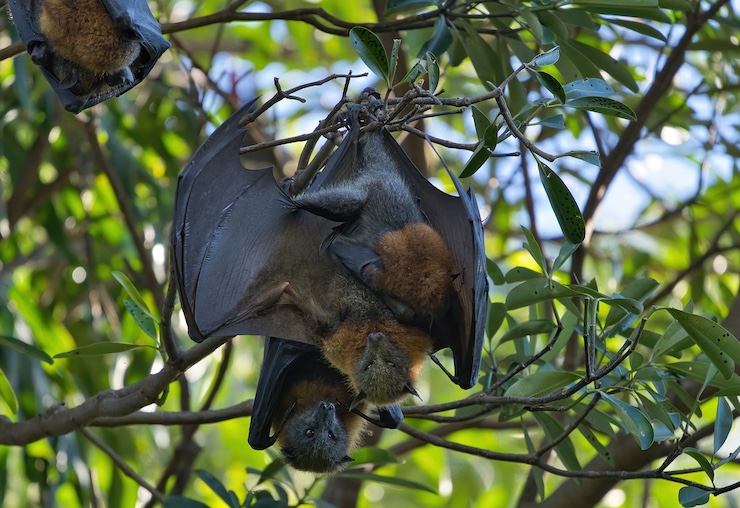
© Andrew Mercer
For thousands of years, bats have been falsely feared. Mayan artwork dating back to 2,000 BC depicts bats as fearsome creatures, harbingers of death. It is easy to see how this misconception started. Bats are nocturnal creatures that live in caves or dark creepy places. They stealthily swoop through the night, and when spooked, a huge mass can start to swarm. Looking like flying rodents, they have an unusual appearance. People who fear bats think that they are dirty, disease ridden, blood sucking creatures. The only bat that consumes blood is the Vampire bat found in South and Central America. And even then, these bats don’t attack humans but are more like mosquitos that go after sleeping livestock.
The reality is that bats are extremely important members of our ecosystem. Most bats eat insects or fruit. Bats can devour up to 1,200 insects in a single hour, an excellent way to control pest species like mosquitos. Bats that eat fruit are vital pollinators. As bats feed on fruit trees, they spread pollen. Their droppings help spread seeds and fertilize the soil. Unfortunately, many species of bats are facing the threat of extinction because of habitat loss, and other negative human interventions like pesticides. Recognizing the importance of protecting bats, some places like New Zealand and Australia are working to protect and reestablish bat populations.
Endemic to the southeastern forests of Australia is the grey-headed flying fox, a 23-29cm bat that eats fruit, nectar, and pollen. It is Australia’s largest bat and is currently listed as vulnerable to extinction because of deforestation and extreme weather events. In the 1900’s, grey-headed flying fox populations were well in the millions. As of 2019, conservationists estimate that their numbers have dropped to close to 586,000 and steadily declining. The Australian government has undertaken a mission to see these numbers increased. But, to do so, conservationists need to get detailed counts on grey-headed flying fox populations.
Traditionally, getting population counts on threatened species would mean spending hours in the field to manually count or setting up trail cameras. However, as Master of Research graduate Elaine McCarthy at the Hawkesbury Institute for the Environment wrote, these tactics are too labor intensive and unreliable. Elaine and several colleagues recently published an article in one of the most highly respected scientific journals, Remote Sensing In Ecology and Conservation, about using drones to replace outdated population counting methods.
Drones are of particular use when counting bats because they are nocturnal creatures. Trying to count them in daylight, when it is safe for people to be traversing the tricky landscape of a forest, will result in sub-par numbers. Being able to keep track of the fast and far flying bats in the dark is not something the human eye can easily do. Drones, on the other hand, can enter the forest environment safely without disturbing the bats in their natural habitat. The thermal imaging camera on a drone can give the researcher a snapshot of the entire region. If bats are roosting or flying about, the drone’s camera can capture them.
The researchers send the drone out on multiple missions to collect infrared thermal images of the bats hidden in the dark forest. These images are then compiled to create a database of bat populations. By comparing hundreds of images, Elaine and her team can put together feasible population counts. The first round of research led by Elaine was to see if the drones could outperform traditional population count practices. In the article published by Elaine and her team of researchers they state, “We found a high concordance between the number of flying-foxes manually counted in drone-acquired thermal imagery and the true abundance of flying-foxes in single roost trees, as obtained from direct on-ground observation. This indicated that the number of flying-foxes observed in thermal imagery accurately reflected the true abundance of flying-foxes.”
With the drone collected data, conservationists will have more than just a better way of counting bat populations. The information will give them detailed insights into the behaviors, flight paths, feeding habits, and life cycles of these misunderstood creatures. “This method is very valuable for reliably monitoring the abundance of individuals in flying-fox roosts and will aid in the conservation and management of this globally threatened group of flying-mammals, as well as other warm-blooded tree-roosting species,” said senior author Associate Professor of Animal Ecology at the Hawkesbury Institute for the Environment Justin Welbergen.
|